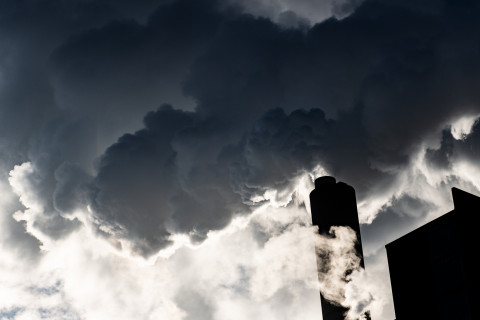Different countries use different methods to limit the emissions of black carbon and methane. Researchers are now exploring policy measures and legal instruments that are optimal for developing countries.
The atmospheric life cycle of short-lived climate pollutants, such as black carbon and methane, is a short one. Yet they play a significant role in warming the atmosphere. According to the latest IPCC report, emissions of methane and black carbon need to be drastically reduced by 2050 in order to mitigate climate change.
“If we want to limit average global warming to 1.5 degrees Celsius without overshooting the temperature limit, emissions need to be reduced by 35 per cent by 2050,” Professor Kati Kulovesi says.
She is the leader of the international ClimaSlow project, which looks for optimal ways to limit emissions of short-lived climate pollutants in developing countries. The project carries out case studies in China, India, Mexico and Chile.
China and India are significant emission sources of black carbon and methane globally, and these countries also struggle with air quality problems. Mexico and Chile, on the other hand, are more progressive, and they have adopted interesting policy measures that the research project is now analysing in more detail.
The international regulation of short-lived climate pollutants is, according to Kulovesi, multi-layered and uncoordinated. The Kyoto Protocol sets limits on methane emissions, but these limitations apply to developed countries only.
“With the conclusion of the Paris Agreement, developing countries are also participating in climate change mitigation, and including methane in the Nationally Determined Contribution is a good idea for many developing countries. Interestingly, there are also countries that have included black carbon in their contributions under the Paris Agreement, and this expansion is one of the things our research project is interested in.”
Different countries have different ways of limiting the emissions of black carbon and methane. The range of potential policies and measures is wide, as the emission sources differ by country – and the same is true for priorities and resources.
“In China, for example, recent years have witnessed many campaigns to improve the quality of air, and the problem has also been addressed by regulating coal burning, heavy industries and transportation.”
Black carbon emissions are mainly caused by fossil fuels, biomass burning and biofuels. Emissions come from transportation, coal plants and industries, for example, as well as from forest fires and residential wood burning. The emission sources of methane include waste processing, cattle breeding and side emissions from the production of fossil fuels.
The ClimaSlow project explores the measures taken by the case study countries to mitigate short-lived climate pollutants – and also what could be done better.
“We are also interested in how climate-related legal instruments and policy measures can spread from one country to the next, and how countries can learn from each other.”
The multidisciplinary project is a novel combination of social and natural sciences, involving the University of Eastern Finland’s research groups in climate law and aerosol physics.
“Our aerosol physics researchers use modelling to study the climate implications of different legal scenarios and emission reductions,” Kulovesi explains.
